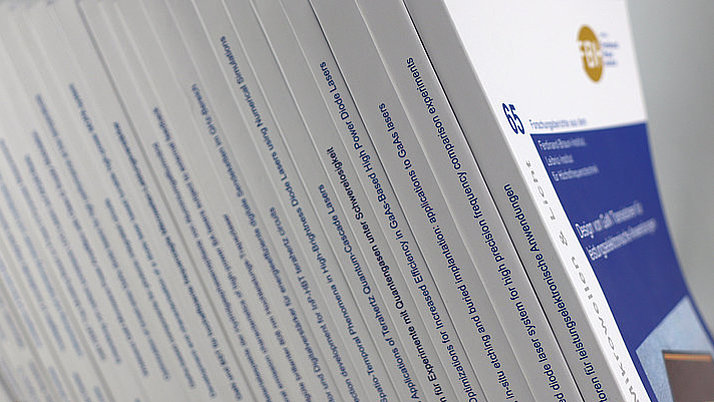Optimized diamond inverted nanocones for enhanced color center to fiber coupling
C.G. Torun1, P.-I. Schneider2,3, M. Hammerschmidt2,3, S. Burger2,3, J.H.D. Munns1, and T. Schröder1,4
Published in:
Appl. Phys. Lett., vol. 118, no. 23, pp. 234002, doi:10.1063/5.0050338 (2021).
Abstract:
Nanostructures can be used for boosting the light outcoupling of color centers in diamond; however, the fiber coupling performance of these nanostructures is rarely investigated. Here, we use a finite element method for computing the emission from color centers in inverted nanocones and the overlap of this emission with the propagation mode in a single-mode fiber. Using different figures of merit, the inverted nanocone parameters are optimized to obtain maximal fiber coupling efficiency, free-space collection efficiency, or rate enhancement. The optimized inverted nanocone designs show promising results with 66% fiber coupling or 83% free-space coupling efficiency at the tin-vacancy center zero-phonon line wavelength of 619 nm. Moreover, when evaluated for broadband performance, the optimized designs show 55% and 76% for fiber coupling and free-space efficiencies, respectively, for collecting the full tin-vacancy emission spectrum at room temperature. An analysis of fabrication insensitivity indicates that these nanostructures are robust against imperfections. For maximum emission rate into a fiber mode, a design with a Purcell factor of 2.34 is identified. Finally, possible improvements offered by a hybrid inverted nanocone, formed by patterning into two different materials, are investigated and increase the achievable fiber coupling efficiency to 71%.
1 Integrated Quantum Photonics, Department of Physics, Humboldt-Universität zu Berlin, Newtonstraße 15, 12489 Berlin, Germany
2 JCMwave GmbH, Bolivarallee 22, D-14050 Berlin, Germany
3 Zuse Institute Berlin (ZIB), Takustraße 7, D-14195 Berlin, Germany
4 Diamond Nanophotonics, Ferdinand-Braun-Institut, Gustav-Kirchhoff-Straße 4, 12489 Berlin, Germany
Topics:
Gaussian beam, Purcell factor, Emission spectroscopy, Optical fibers, Nanomaterials, Finite-element analysis, Crystallographic defects
Copyright © 2021 Author(s). All article content, except where otherwise noted, is licensed under a Creative Commons Attribution (CC BY) license (http://creativecommons.org/licenses/by/4.0/). https://doi.org/10.1063/5.0050338
Full version in pdf-format.


